The Advanced Short Range Air-to-Air Missile, i.e., ASRAAM, is a highly sophisticated and versatile weapon system meticulously designed for precise and effective air-to-air combat engagements.
Discover the Best of the ASRAAM Missile; this Fire-And-Forget Air-To-Air Missile (AAM) emerges as the ultimate weapon designed for within-visual-range (WVR) engagements. Endowed with cutting-edge technology, it possesses the capability to neutralize any fighter aircraft, irrespective of the sophistication of their countermeasures.

Once launched, the Fox-2 missile ensures the enemy’s destruction is inevitable and unstoppable. The ASRAAM asserts itself as the harbinger of demise for any aircraft daring to challenge its supremacy, leaving behind nothing but a trail of destruction and devastation.
ASRAAM is currently in service with the Royal Air Force, serving as a Within Visual Range (WVR) Dominance weapon. This weapon is also operationally deployed with the Indian Air Force, integrated into its Jaguar Darin III.
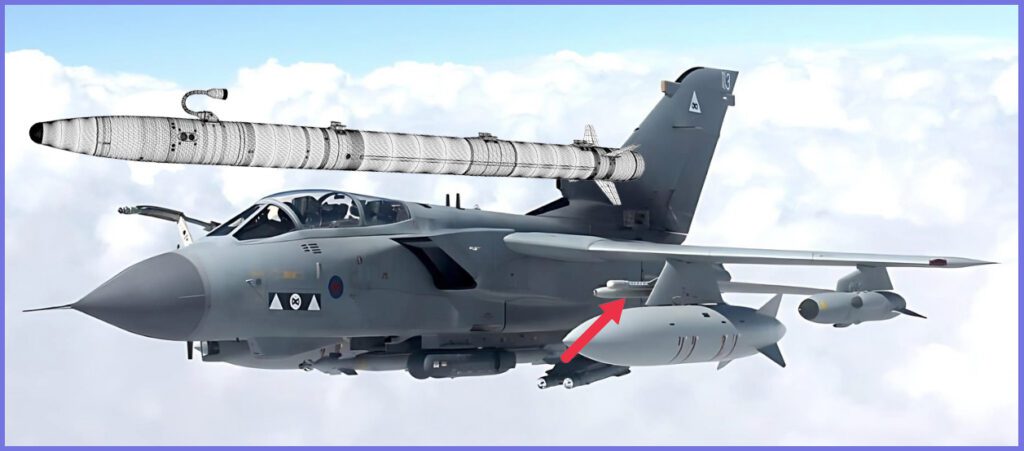
As of January 31, 2019, the Indian Air Force has been evaluating integrating the ASRAAM missile system with the Sukhoi Su-30MKI. The goal is to standardize the ASRAAM as the primary short-range missile across various aircraft platforms, including the LCA Tejas.
Developed by MBDA in the United Kingdom, the ASRAAM demonstrates exceptional performance, achieving success in over 100% of within-visual-range scenarios.
This makes it a crucial component of modern air-to-air warfare strategies. With a flight capability exceeding Mach 3 and a range surpassing 25 kilometres (16 miles), the ASRAAM maintains remarkable 50 g manoeuvrability, thanks to its body lift technology combined with tail control.

The ASRAAM missile boasts a compact design and a sophisticated guidance system that incorporates an imaging infrared seeker, delivering outstanding agility and precise target-tracking capabilities.
Renowned for its high-speed performance and swift reaction time, the missile proves highly effective in dynamic aerial combat scenarios. ASRAAM’s compatibility extends across a diverse array of aircraft, elevating the air-to-air capabilities of numerous military platforms.
With its state-of-the-art technology and adaptability, ASRAAM stands as an indispensable asset within the arsenals of air forces globally, significantly contributing to air superiority and enhancing the overall defence capabilities of modern military forces.

The ASRAAM Timeline: Key Developments and Historical Insights
During a series of tests conducted in the mid-1970s, the USAF discovered that the Sidewinder, which was supposed to have a far shorter range than the AIM-7 Sparrow, exhibited an effective range against fighter targets.
The launching aircraft had to maintain its direction for its radar to continue illuminating the target since the missile was guided by the signals reflected off the target by the attacking aircraft’s radar. As the target aircraft approached, there was a window of opportunity for it to fire infrared missiles before being struck during the missile’s flight.
Mutual kills were the outcome, which is undesirable. Upon analyzing consistent results, the USAF concluded that developing a new weapon to replace the Sparrow was the most effective strategy.

The primary goals included reducing the weight to a level suitable for launchers designed for the Sidewinder, implementing a self-contained active seeker to enable the launching fighter to turn away, and extending the range to prevent IR-guided missile-firing fighters from entering the launch range.
This led to the evolution of the AIM-120 AMRAAM project; its initial versions boasted a range of 50 to 75 kilometres.
The AMRAAM highlighted a significant challenge, namely the substantial disparity in range between the short range of the Sidewinder and the extensive range of the AMRAAM. In contrast to the Sidewinder, which remains a sought-after weapon, the AMRAAM was not specifically designed as a snap-shot weapon.
The passive assault capability of a heatseeker can offer a considerable advantage in combat. The AIM-9L was always intended as a temporary solution; designing a new infrared-guided missile to function as an AMRAAM equivalent would necessitate a fundamentally different approach.
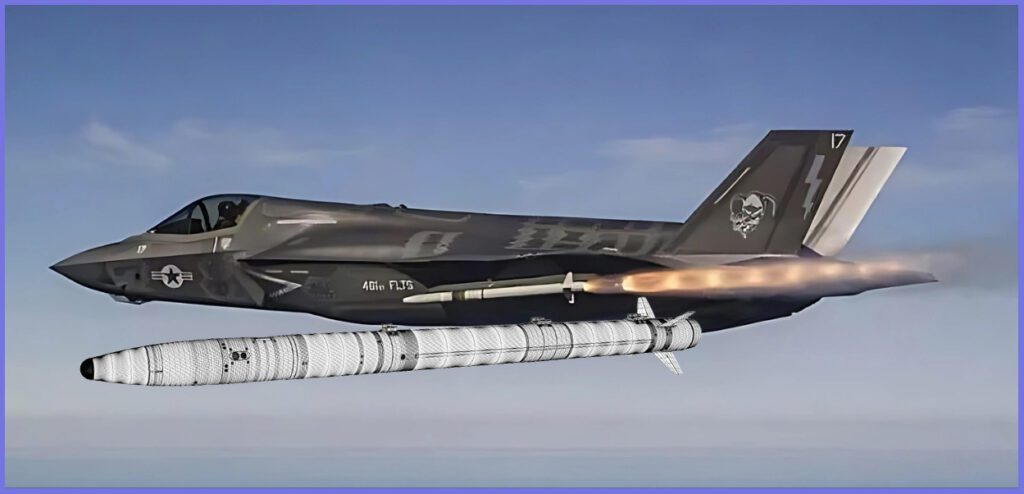
NATO nations agreed in the 1980s that the US would develop the AMRAAM and that a team composed mainly of British and German engineers would create a short-range air-to-air missile to replace the Sidewinder. This missile was designated AIM-132 ASRAAM by the US.
In July 1989, Germany withdrew from the program, effectively concluding the agreement. Various factors have been suggested for this decision, including the end of the Cold War and Germany’s possession of substantial stockpiles of Soviet Vympel R-73 missiles, which were carried by the MiG-29 in the German Air Force. However, many analysts argue that financial concerns and defence industry share issues were the real reasons behind this move.

After Germany’s withdrawal from the project, ASRAAM became solely a British-designed missile developed by MBDA UK. Launched in the late 1980s, the project completed extensive developmental tests before being approved for induction into the British Armed Forces.
The missile has undergone thorough testing, including live firings from fighter aircraft, demonstrating a high level of accuracy and reliability.
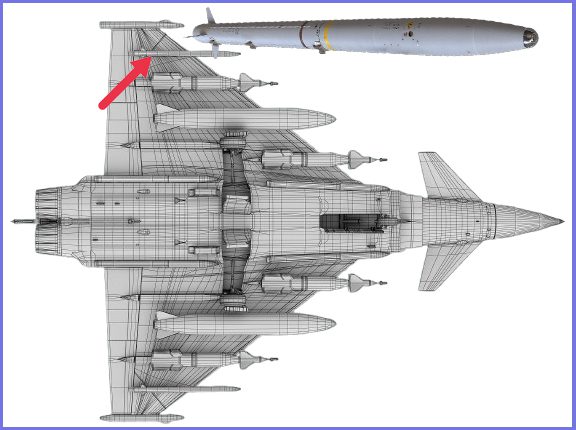
As ASRAAM entered the production phase, there was a significant rise in support for U.S.-led industrial and political lobbying efforts. This, combined with a robust European economy, led the U.S. government to end testing in June 1996 and divert its attention from the ASRAAM program.
Meanwhile, the UK persisted with the development and manufacturing of ASRAAM, delivering the first missile to the Royal Air Force (RAF) in late 1998. The ASRAAM is utilized to equip the RAF’s Typhoon, and it was also deployed on the Harrier GR7 and Tornado GR4 until their retirement.
The ASRAAM Block 6 standard, developed as part of the ASRAAM Sustainment programme, entered service on the Typhoon in April 2022 and will be deployed on the F-35B in 2024. Block 6 introduces new and updated subsystems, as well as a new internal cooler that replaces external cooling.
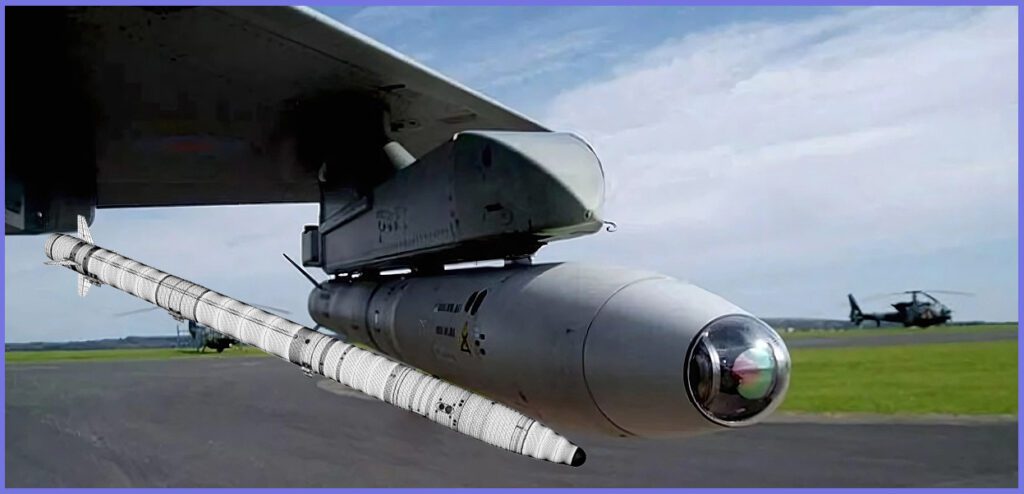
The seeker has been replaced with a new, higher-resolution seeker built in the United Kingdom. Because there are no US-made components, it is exempt from ITAR restrictions and can thus be exported without US approval.
In within-visual-range (WVR) air combat, the ability to initiate an attack swiftly is paramount. A pilot engaged with an adversary requires a missile that reacts with unparalleled speed and agility to maximize the probability of a successful strike, overcoming evasive target manoeuvres and countermeasures. ASR-AAM has demonstrated its capability in this regard.
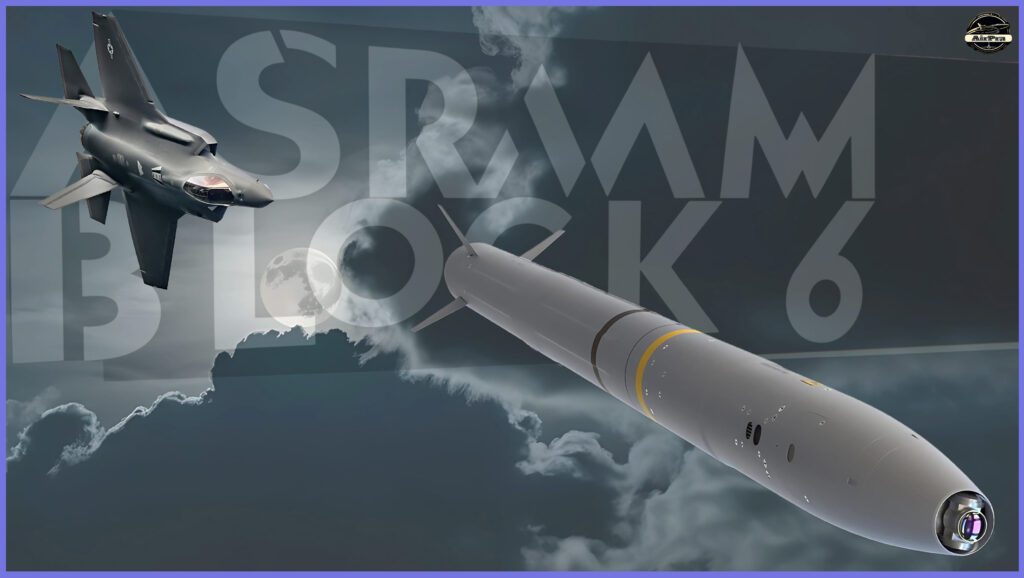
ASR-AAM utilizes data from the aircraft’s sensors, including radar or helmet-mounted sight, and can autonomously serve as an infrared search and track system.
Demonstrating its versatility, the Royal Australian Air Force (RAAF) successfully conducted ‘over the shoulder’ firing in Lock On After Launch (LOAL) mode, effectively engaging target drones situated behind the wing-line of the launching aircraft during a demonstrative showcase.

ASRAAM Technology Overview: Features That Set It Apart
ASRAAM stands out as a high-speed, exceptionally manoeuvrable, heat-seeking air-to-air missile. Fundamentally, it is conceived as a “fire-and-forget” projectile. Propelled by a solid-fuel rocket motor, the ASRAAM measures 2.9 meters in length and has a diameter of 166 mm. Weighing approximately 88 kg, it can carry a high-explosive blast fragmentation warhead weighing up to 10 kg.
The missile boasts an advanced guidance system encompassing an inertial navigation system, mid-course guidance, and an imaging infrared seeker dedicated to terminal guidance. Travelling at speeds well beyond Mach 3 and covering distances of over 25 kilometres (16 miles), ASRAAM retains an impressive 50g of manoeuvrability, attributed to the combination of body lift technology and tail control fins.
The Advanced Short Range Air-To-Air Missile (ASRAAM), produced by MBDA UK and alternatively known by its American designation AIM-132, is an imaging infrared homing (heat-seeking) air-to-air missile specifically designed for close-range combat.

The primary enhancement is a newly designed 128×128 resolution imaging infrared focal plane array (FPA) seeker, which was produced by Hughes before its acquisition by Raytheon.
This seeker can identify specific elements of the targeted aircraft, such as the cockpit and engines, and has a long acquisition range, great resilience to countermeasures, and a 90-degree off-boresight lock-on capability. Additionally, the F-35 Lightning II and other aircraft carrying the ASRAAM benefit greatly from the missile’s Lock-On After Launch (LOAL) capability.
The ASRAAM warhead can be activated by impact or a laser proximity fuse. Due to susceptibility to electronic warfare intervention by adversarial jammers, a laser proximity fuse was utilized. When comparing ASRAAM to other dogfighting missiles like the AIM-9X, the larger diameter of ASRAAM also allows for increased computer power and, consequently, improved countermeasure capabilities.
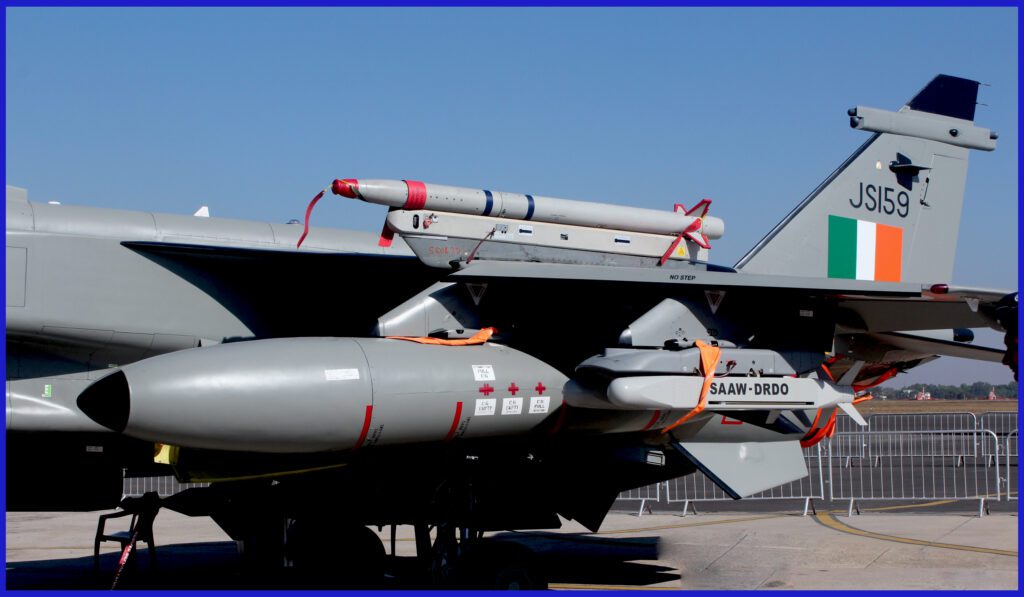
Global Reach: Evaluating the Export Potential of the ASRAAM Missile
The ASRAAM has been sold to several countries, including the USA, Australia, and India. It is recognized globally as a highly effective air-to-air missile and is actively used by multiple air forces.
Qatar and Oman are anticipated to incorporate this missile into their military operations shortly. In August 2023, reports indicated that Ukraine had been supplied with an undisclosed number of improvised ground-based launch platforms for the ASRAAM, referred to as the CAMM (Common Anti-Air Modular Missile).
In 2014, India’s defence ministry entered into a $428 million contract with MBDA to outfit its SEPECAT Jaguar strike aircraft with the ASRAAM short-range air-to-air missile. MBDA’s proposal triumphed over competitors, including Rafael’s Python-5 missile, securing victory in 2012.
This contract followed a previous 2012 order for 493 MICA missiles, replacing Matra Super-530D and Magic II missiles as part of an update for the Indian Air Force’s Mirage 2000.

In July 2014, India signed a significant deal to procure a total of 384 ASRAAM missiles from MBDA UK, to integrate them into the SEPECAT Jaguar strike aircraft. This procurement is aimed at enhancing the operational capabilities of the Indian Air Force.
The ASRAAM dogfighting missile is presently undergoing extensive testing by the Indian Air Force on the Sukhoi Su-30MKI, aiming to establish itself as the standard dogfighting missile for various aircraft, including the Tejas.
The manufacturing of the missile takes place at the Bhanoor plant of Bharat Dynamics Ltd (BDL), where comprehensive services for maintenance, repair, and overhaul are also offered.

Operational Excellence: Assessing the ASRAAM Missile’s Capabilities
The ASRAAM is meticulously designed to engage a diverse range of aerial targets, encompassing fighter aircraft, UAVs, and helicopters, all within the visual range of the pilot. It exhibits the capability to engage targets at altitudes ranging from 50 meters to 50,000 ft and can intercept at speeds of up to Mach 3.
CAMM: Modular, Effective, and Ready for Modern Threats
During the Defence and Security Equipment International (DSEi) conference in September 2007, an announcement was made regarding the UK Ministry of Defence (MoD) funding a study conducted by MBDA. This study aimed to explore potential replacements for the Rapier and Sea Wolf missiles. The outcome was the development of the Common Anti-Air Modular Missile (CAMM), which was designed to share components with ASRAAM.
Notably, it incorporates the very low signature rocket motor from Roxel and the warhead and proximity fuze from Thales. CAMM is equipped with a Common Data Link (CDL), allowing it to receive mid-course corrections from suitably equipped land or air platforms and seamlessly transition to active homing when in close proximity to the target.
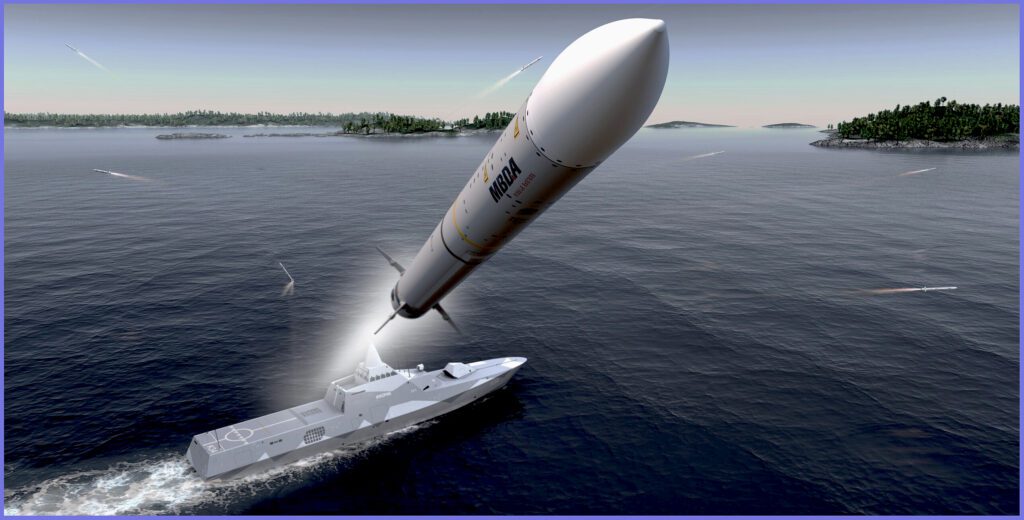
ASRAAM Block 6: Next-Generation Air Combat Superiority
In February 2017, pivotal milestones were achieved with the successful firing of ASRAAMs from F-35 Lightning IIs at both Naval Air Station Patuxent River and Edwards Air Force Base in the USA.
This groundbreaking event marked not only the inaugural firing of a British-designed missile from an F-35 Joint Strike Fighter (JSF) but also the unprecedented occasion of any non-US missile being launched from this advanced aircraft.

The ASRAAM Block 6 standard, a product of the ASRAAM Sustainment program, was officially commissioned on the Typhoon in April 2022 and is scheduled to commence F-35 service in 2024. This latest block iteration brings forth a host of advancements, featuring newly developed and updated sub-systems, and a transition from external cooling to a more efficient internal cooler.
Notably, the seeker technology has undergone an upgrade, now integrating a higher-resolution seeker manufactured in the UK. A noteworthy distinction is that the ASRAAM Block 6 incorporates no components of U.S. origin, making it exempt from ITAR (International Traffic in Arms Regulations) restrictions.
Consequently, this exemption allows for export without requiring approval from the United States.
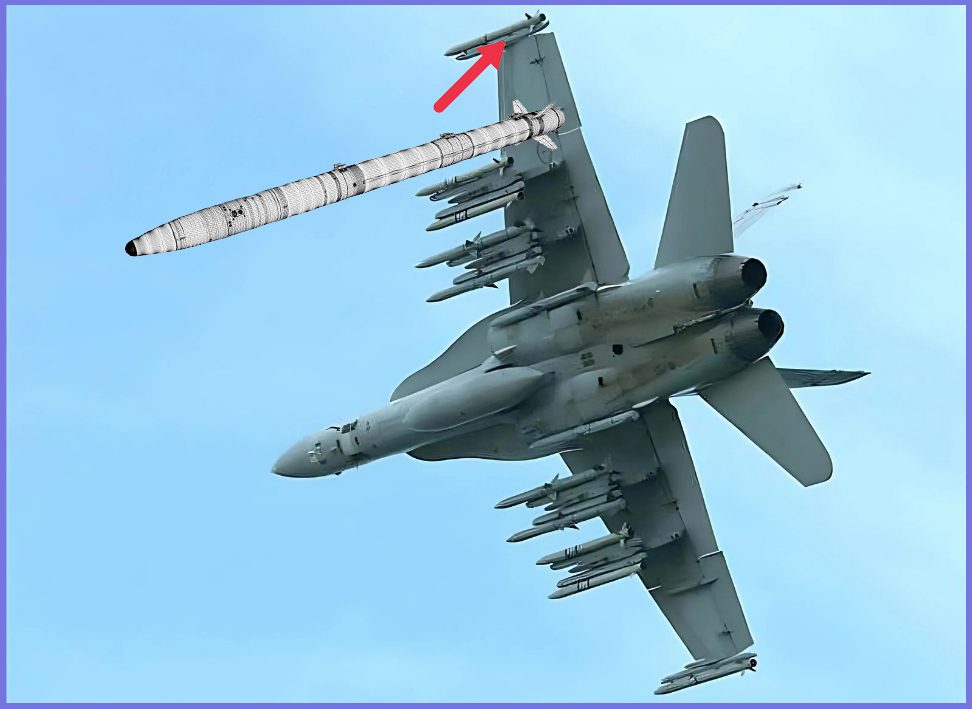
Engineering Excellence: Technical Specifications of the ASRAAM Missile
- Weight: 88kg (194 lb)
- Length: 9 ft 6 in (2.9 m)
- Diameter: 166mm (6.5 in)
- Wingspan: 450 mm
- Range: 25 km
- Warhead: 10kg (22 lb) blast/fragmentation
- Detonation: Laser proximity fuse and impact
- Engine: High-impulse, dual-burn solid rocket motor
- Speed: Mach 3
- Guidance: Features advanced infrared homing with a 128×128 element focal plane array, lock-on after launch (LOAL) capability, and strap-down inertial guidance for precise targeting and stable navigation
- Launch Platform: The ASRAAM is deployed on the RAF Typhoon, F-35B, IAF Jaguar, and Hawk Mk 132 Advanced Jet Trainer. Trials are currently underway for its integration with the LCA Tejas.
- Unit cost: Almost £200,000

In conclusion, the ASRAAM represents the pinnacle of air-to-air missile technology, providing a potent combination of precision, speed, and adaptability. Its development by MBDA showcases a commitment to advancing aerial combat capabilities, rendering it a vital asset for air forces worldwide.
With its compact design and cutting-edge guidance system, ASRAAM stands as a testament to innovation in modern warfare. Serving as a crucial component in the defence strategies of various nations, this advanced missile system plays a pivotal role in ensuring air superiority and enhancing overall national security.

Important Announcement for Our Valued Readers!
After an article is published, updates or changes may have occurred beyond the time of publication. Therefore, it is important to be aware that certain information in the article might be outdated. To ensure the most accurate analysis, it is highly recommended to verify the content with the latest sources available.
However, we are dedicated to delivering outstanding articles on military products and global updates. Maintaining quality and smooth operation requires resources. Your support sustains our efforts in providing insightful content.
By purchasing high-quality products through our affiliated links, you help us keep our platform alive and acquire top-notch items. Your unwavering support is invaluable and inspires us to strive further.
We welcome your suggestions and requests for more information, as we value feedback from our readers. If there’s specific defence material or equipment not covered on our site, please share your request in the comments.
We’ll strive to research and provide the required information. We sincerely thank you for your unwavering interest in our website, and we eagerly anticipate hearing from you! Enjoy your reading experience!

Wow, wonderful blog structure! How lengthy have you ever been blogging for? you made running a blog glance easy. The full look of your site is excellent, as well as the content material!